Beguiled by organic achievement, the intricate matrix of form and function that propels the natural world, artists inhabiting myriad disciplines have teetered on the brink of alchemy and madness, prescient brilliance and gnawing failure – longing to simulate the structures fundamental to biological performance. Macro emulation witnessed Leonardo DaVinci’s flying machines, Antonio Vivaldi’s Four Seasons , and Jules Verne’s cephalopodic, submarine creations; micro emulation found stained glass cathedral windows in dragonfly wings, Volkswagen bugs in Coleoptera, umbrellas in mushroom caps and gills, art nouveau music stands in Portuguese man-of-wars (Physalia physalis), fishing nets in spider webs, Japanese wagashi in cherry blossoms and frozen pine boughs, and Chinese scholar’s rocks in pluming smoke and roiling ocean waves.

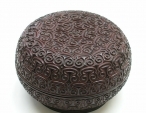
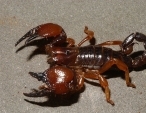
Figures: A | B | C |
Yet one of the more resonant echoes of the human imperative to venerate nature by virtue of mimicry has been virtually overlooked thus far. Chinese lacquer, particularly the inlaid and carved polychrome Yuan and Ming dynasty masterpieces (figs. A and B), evolved in both materials and technique to embody the strongly analogous structure and singular, intrinsic properties of arthropod physiology.
When considering these invertebrates of the phylum Arthropoda, few laypersons look beyond the segmented body, jointed limbs, and sometimes fatal strike of scorpions, or the multi-legged, serpentine fear induced by centipedes. Barbed visions of toxicity and death – along with a most unfortunate collective societal revulsion for skittering creatures strongly resistant to delightful anthropomorphization – have obscured the underpinnings of relevant dialogue regarding numerous aesthetic (figs. C and D), structural, functional, physiological, and chemical parallels between Chinese lacquer and arthropods–art and science inextricably bound.
In conjuring ingenious artistry in homage to the biological, the majority of the lacquers presently discussed were recently on view in the superbly discriminating exhibition, Masterpieces of Chinese Lacquer from the Mike Healy Collection , which ran from September 15- December 3, 2005 at the China Institute Gallery in New York City . Healy’s two decade long collecting passion is evident in his choice of each consummately executed piece–thirty-one objects in all–from the richly articulated textures and patterns of Yuan dynasty black lacquer boxes inlaid with mother-of-pearl, to the swirling formal tixi scrollwork, floral patterns and sophisticated narrative scenes of Ming dynasty carved lacquer. Yet the sumptuous Lychee Box (fig. E), with its refined use of multiple carved patterns to create remarkable depth in the fruit on top and lush, masterfully delineated pomegranate flowers on bottom, once emerged from the dangerous and raw.
Ironically, the innate venomousness of many arthropods can also be found lurking beneath lacquer’s elegant skin; sleek perfection and exquisite sheen of finished objects–plates, covered boxes, cup stands, and screens–belies the inherent toxicity of lacquer in its raw state, highly poisonous to those handling the latex, a viscous liquid which, when tapped, trickles from gashes cut into the bark of lacquer trees, –by far the most important being Rhus verniciflua , a native of China– [1] . Severe dermatitis results from contact with the component urushiol [2] (from urushi , the Japanese name for lacquer). Curiously enough, the antedote to lacquer poisoning, similar in chemical properties to the laccols in poison ivy and certain types of mushrooms, was discovered by the ancient Chinese–noted in early medieval Chinese alchemical texts–in the curative tissues of crabs and other shell fish.
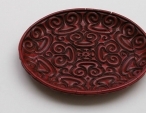


Figures: D | E | F |
Yet it is precisely the process of polymerization by which lacquer is transformed from a toxic liquid to a benign solid that invites comparison with the arthropod cuticle (exoskeleton). Laid down over a seamlessly constructed wooden (utilized most often) base in one to two hundred exactly uniform layers (in the finest Ming dynasty pieces) of inconceivable thinness–building up the remarkable half inch depth necessary for the most refined carving–the lacquer must have oxygen to set properly, and will not set in an atmosphere of carbon dioxide or nitrogen; it is precisely this necessity for oxygen to enable polymerization which both dictates and limits the methodology and manufacture of carved lacquer by craftsmen of this period.
As lacquer craftsmen always built up layers beginning from the base surface and progressing upwards–utterly divergent from the typical methodologies of Western sculptors, who fabricated ornament and modeled clay by fluid, external additions and deletions of material–so this process is reflected in nature by the formation of the arthropod cuticle, which is typically formed by the epidermal cell layer, which is beneaththe existing cuticle; successive layers are created below the existing cuticle, with each new layer displacing the previous one upwards. [3] For lucidity in visualizing this fascinating but hidden similitude, one can turn to the excellent diagrams of transverse cuticle sections of a –Soil Centipede–, Haplophilus subterraneus, (fig. F) a centipede discussed in J.G.E. Lewis’s The Biology of Centipedes and Randy Mercurio’s transmission electron micrograph (fig. G) by Randy Mercurio, Scientific Assistant and Arachnologist/Myriapodologist at the American Museum of Natural History in New York City) of a related centipede cuticle magnified 16,600 times (the original diameter of the whole body of the worm-like centipede is only a few millimeters).
One of the most lucid Western historical accounts of the tribulations of eighteenth century lacquerers frustrated by layers of lacquer that would not set correctly, was written by Père d’Incarville, a Jesuit priest and esteemed botanist who resided in Peking for seventeen years and nurtured an abiding passion for lacquer manufacture. Attesting to the necessity for the thinnest possible application of lacquer layers, d’Incarville wrote, prior to his death in 1757, to the Academy of Sciences in Paris : –The oxygen comes from the air and is not able to penetrate far into the layer, so that the layer has to be very thin if the lacquer is to set properly. If the layer is too thick a skin forms on the outside and the inside remains liquid. Then there is no remedy but to remove the layer and start afresh.– [4]
According to the late Chinese lacquer scholar, Sir Harry Garner, discussing the nature of lacquer and distribution of lacquer trees in his seminal, posthumously published work, Chinese Lacquer , measurements of sections of Ming lacquer show that the thickness of individual layers is of the order of 0.03 mm or less. [5]
Correlating in near perfect tandem with nature, mathematical comparisons can be readily drawn to the thickness of a scorpion cuticle (layer), employing the invaluable expertise of Randy Mercurio, who studies scorpions and centipedes, arachnids and myriapods, respectively. Utilizing a micrometer–an instrument for measuring minute distances, especially with a finely threaded screw–readings have been published for these two scorpion cuticles: 0.045 mm (1 mm=1,000 micrometers) for the Euscorpius italicus cuticle (layer) and 0.100 mm for the Hadrurus arizonensiscuticle (layer) (fig H and I). [6] Bearing in mind the 0.03 mm Ming lacquer thickness, visualization of analogous layers may be honed to an ever sharper point by additional comparative micrometer readings of similar materials taken by Mercurio specifically for this article; white Hammermill 20 lb. typing paper is 0.10 mm thick, while Japanese rice paper reads 0.04 mm, and tracing paper hits the lacquer mark dead on at a perfectly synchronous 0.03 mm.


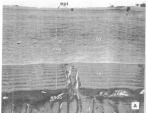
Figures: G | H | I |
Rivaling the consistent thinness of lacquer layers in structural importance and ultimate cohesion is the vital presence of humidity in the drying process (with each layer taking up to forty-eight hours to dry), emblematic of the curious and often confounding properties of lacquer. Whether it is the Chinese use of a –cave– in the ground to enshroud lacquer wares in moist night air, or the Japanese tradition of damp boxes, or chambers, it has been determined over centuries of trial and error that – the hardening process which is so essential to every stage in the preparation of lacquer-ware is expedited and perfected by the presence of moisture; and one may say with truth that the lacquer dries in a moist atmosphere. [7]
Correspondingly, the purpose of an arthropod’s cuticle is to retain water, as some arthropods are subject to the deleterious effects of low humidity–such as those living in desert environments, like the – Arizona Desert Hairy Scorpion – ( Hadrurus arizonensis ) and –Giant Desert Centipede– ( Scolopendra heros ). If a scorpion or centipede is severely dehydrated while molting, the molting process can become problematic and sometimes terminal–or can result in deformation.
Paralleling the injurious effects of arthropod dehydration, lacquer which is not properly set in peak humidity will deform in the carving process, nullifying the efforts of even the most skilled human hand to cut precise, smooth lines and clean angles, particularly in –marbled– lacquer, in which the lacquer is applied to a smooth surface in bands of different colors which are exposed by carving at an angle to the surface–a beautiful example of which is China Institute’s carved red and black lacquer (tixi) Round, Straight-edged Box.
Even in death, buried away from appreciative eyes of the living in early Chinese tombs, lacquer must exist in uniform conditions of both temperature and humidity. Destruction of artifacts through centuries of fluctuating subterranean atmosphere has produced legions of decomposed wooden bases to which the lacquer was generally applied, –such that there was nothing left but an earth impression covered with a thin skin of lacquer or, worse still, only the skin itself–. [9] As in molting scorpions, their living interior is gone, and the exuvium, or cast exoskeleton–like a ghost image of the organism–is left behind.
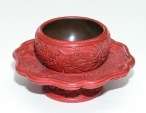


Figures: J | K | L |
Following the Greco-Roman mythological human soul into hell, lacquer can likewise exist in damnable purgatory, neither radiantly alive nor grotesquely dead, but rather as a monstrous appendage of ravaged earthly endeavors. In Japan Society’s temporally evocative exhibition, Hiroshi Sugimoto: History of History, (fig. K) on view from September 23, 2005-February 19, 2006 in New York City, six lacquer masks (fig. M) from the Kamakura through Momoyama periods (13 th -late 16 th c.) conjure the indignities of perished time on both hoary lacquer and all things organic and vulnerable.
In stark contrast to the fascinating decrepitude of lacquer failing in cohesion and structure, are the multitudes of pristine lacquer objects preserved as iced humanity in suspended animation–in near cryogenic perfection. One glorious example of lacquer’s potential for an eternally elegant afterlife is the Cooper-Hewitt National Design Museum’sSmoking box (tabako-bon) (Fig L), featured in the museum’s extraordinarily eclectic exhibition, Yinka Shonibare Selects: Works from the Permanent Collection , on view in New York City from October 7, 2005-May 7, 2006. Soldier in the permanent collection’s outstanding army of 250,000 objects straddling twenty-three centuries, this resplendent masterpiece of lacquer craftsmanship is a magnum opus of sailboats and cranes, writhing pines and dragon’s breath waves–rendered in myriad patterns employing multiple techniques, such as simulated wood grain planks, gold raised lacquer (takamakie), and maki-e, gold sprinkled across the fathomless skin of a black lacquer sky.
When properly applied in thin layers and correctly set in ideal conditions, lacquer is extremely durable and supremely hydrophobic, most – suitable for domestic vessels, (fig. J) being impervious to liquids and unaffected by the temperatures needed for serving hot foods and liquids–, and has been characterized–as regards the process of polymerization, by which the toxic liquid latex is converted to a benign solid–as –the most ancient industrial plastic known to man–. Attesting to its astounding physical properties, lacquer persists as the surface of choice for laboratory benches in East Asia , owing to its resistance to potent acids.
Sharing lacquer’s hydrophobic properties are scorpions; according to Randy Mercurio, –the cuticle on some scorpions allows [them] to go without drinking water for a few weeks–[while] others might never take a drink of water in their entire lives and instead rely on prey items for their hydration.
Analogous chemical composition of arthropod exoskeletons and lacquer nicely explain shared hydrophobic properties. The chemical makeup and structure of the oleoresin urushiol (one of the major constituents of lacquer) and chitin (all arthropod cuticles) are essentially hydrocarbons–organic molecules primarily composed of carbon and hydrogen. Because these hydrocarbons are large and saturated, they exhibit hydrophobic (water repelling) properties. In general, large hydrocarbon molecules are immiscible, or not mixing with water.
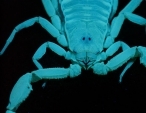
From chemistry to mimicry, another curious, rather esoteric, parallel can be drawn, owing its analogous properties to the coarse poetry of labor and aging, the passage of time evoked by the human hand in deference to the pragmatism of daily survival. Rock dwelling or burrowing scorpions wear off certain areas of their exoskeletons from constant rubbing, causing fluorescent compounds (fig. left) to wear away–leaving the animals unable to fluoresce in those regions, creating indelible patterns of toil.
Its abraded lacquer counterpart has been compared, variously and confusingly, in ancient Chinese literature to –rhinoceros skin’, –tiger skin’, a Han dynasty belt hook (chalked up to phonetic misunderstandings) and even–truly the height of arcane aesthetics–the pattern around a rhinoceros’s navel. Most logically, the term hsi-p’i is now widely accepted as, literally, –western skin’, due to this particular type of marbled lacquer’s resemblance to –the worn surface of western harness–. In Sir Percival David’s illuminating translation of Chao Lin’s ninth century Yin-hua-lu , the pertinent segment reads:
“In the western regions a rider’s saddle changes its colour [sic] through wear from black to red and then to brown. Finally it becomes a combination of all three colours. Furthermore stirrups constantly rubbing against it make a clear pattern in it. Hsi-p’i is an imitation of the worn leather of such a saddle.”
Lacquer is truly the hand crafted exoskeleton of an object’s perishable core –as the cuticle guards the longevity of the scorpion– once alive then later entombed, the organic heart of Han, Yuan, and Ming dynasty wares, which is not only vulnerable to the assault of time, but is, ironically, also the frequent instigator of lacquer’s ultimate downfall: –the lack of durability, not of the lacquer, which when set is one of the most durable of all vegetable products, but of the materials to which it was applied, must have caused the destruction of most of the artifacts exposed over the centuries to changeable atmospheric conditions, particularly in tropical and subtropical countries.
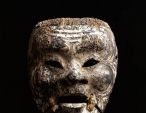


Figures: M | N | O |
Coursing up in tandem through the multitudinous layers of lacquerware and arthropod cuticles, by virtue of enduring similitude at once structural, functional, chemical, and aesthetic, the human mind may at last be able to shake off the interdisciplinary compartmentalization which has increasingly plagued cohesive thought and creative achievement in recent times, and finally begin to reestablish a window to the connectivity of all things scientific, artistic, literary, historical, musical, and mathematical. In searching for inspiration from nature, one must only open both eyes wide with wonder and observe (figs. N and O).




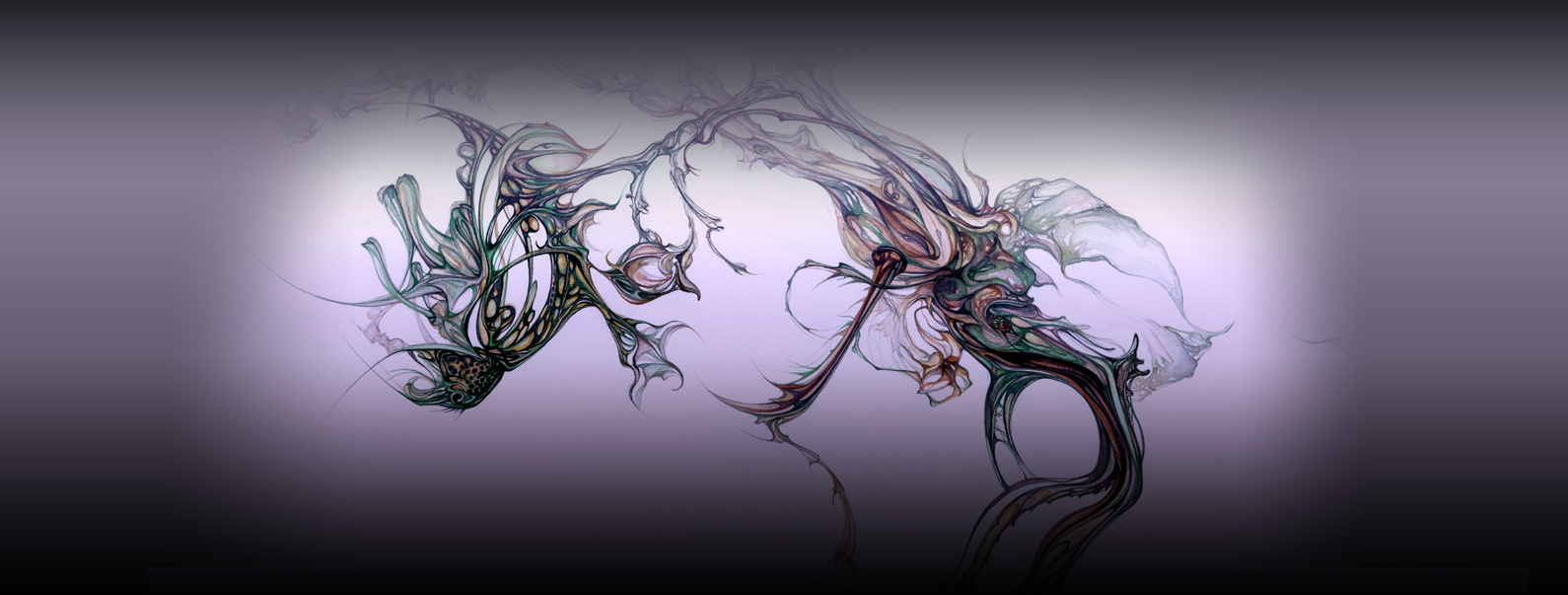

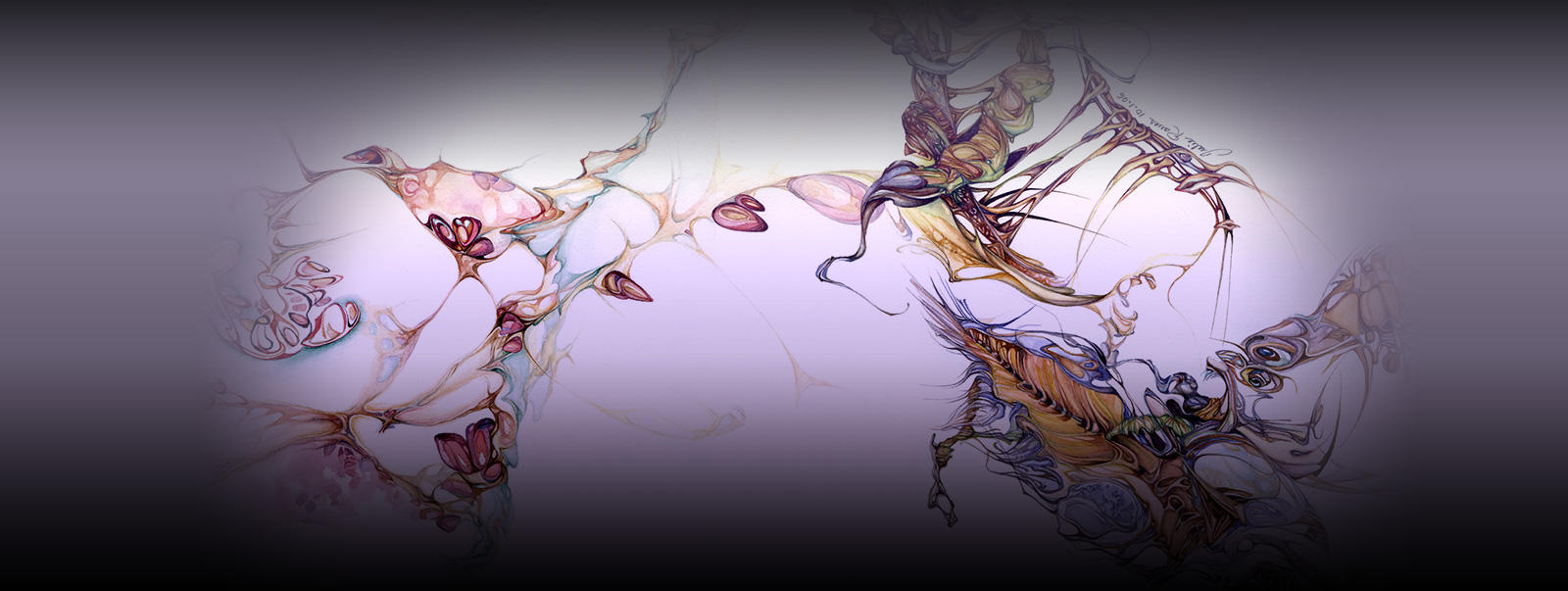
COMMENTS
There are no comments yet!